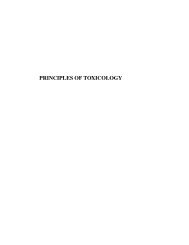Insect-pests - Biology East Borneo
Insect-pests - Biology East Borneo
Insect-pests - Biology East Borneo
Create successful ePaper yourself
Turn your PDF publications into a flip-book with our unique Google optimized e-Paper software.
8 The State of the Forest and Plantation Trends<br />
2.5. Forest plantations in perspective<br />
The total extent of forest plantations in Indonesia is<br />
about 4 million ha including 2 million ha in Java and<br />
about 2 million ha in the outer islands. Plantations in<br />
the outer islands are poised for huge expansion – from<br />
2.0 million ha to 7.4 million ha in the coming years<br />
(see Table 2.3). Based on current trends, much of this<br />
will consist of Acacia mangium, followed by Gmelina<br />
arborea, Paraserianthes falcataria and Eucalyptus spp.<br />
Indigenous timber species will constitute a small<br />
proportion – about 20%. Although there is concern<br />
among environmental groups about such expansion<br />
of industrial plantations of a few species, the fact<br />
remains that these plantations account for only about<br />
10%of the total extent of Indonesian forests (9.4<br />
million ha out of 96.2 million ha). What is of greater<br />
concern is the degradation of the natural forest in the<br />
rest of the 64 million ha of production forests entrusted<br />
to private and quasi-Government enterprises for logging<br />
and management, and the increasing rate of<br />
conversion of forest land into oil palm estates.<br />
The Government expects plantation-grown wood to<br />
satisfy much of the future wood demand by increasing<br />
the area of plantations and improving plantation<br />
productivity. At present, the mean annual increment of<br />
most plantations of fast growing tree species in<br />
Indonesia is 15-25 m 3 ha -1 , and efforts are under way<br />
to increase the productivity through use of genetically<br />
improved planting stock, including hybrids, and nutrient<br />
management (Natadiwirya 1998; Tiarks et al. 1999).<br />
Projections by the Ministry of Forestry of future wood<br />
production indicates almost a doubling of the present<br />
wood production by 2018-19. This will be<br />
accomplished by an increase of 52 million m 3 of annual<br />
wood production from plantations, while there will be<br />
a decrease of 3.23 million m 3 of annual wood production<br />
from natural forests (Table 2.7). Plantation forestry in<br />
Indonesia has to meet this challenge.<br />
Table 2.7. Projected wood production in 2018-19 from different sources<br />
Year<br />
Natural<br />
forest<br />
For<br />
pulpwood<br />
Plantation forest<br />
For construction<br />
timber<br />
Community<br />
forest<br />
Total<br />
million m 3<br />
1999 - 2000 34.79 15.52 1.70 1.49 53.50<br />
2018 - 2019 31.56 42.58 26.73 2.86 103.73<br />
Difference -3.23 +27.06 +25.03 +1.37 +50.23<br />
Source: Natadiwirya (1998)
















